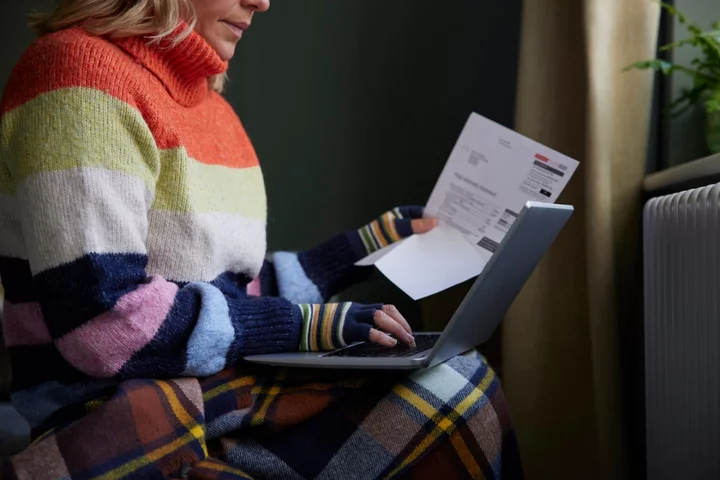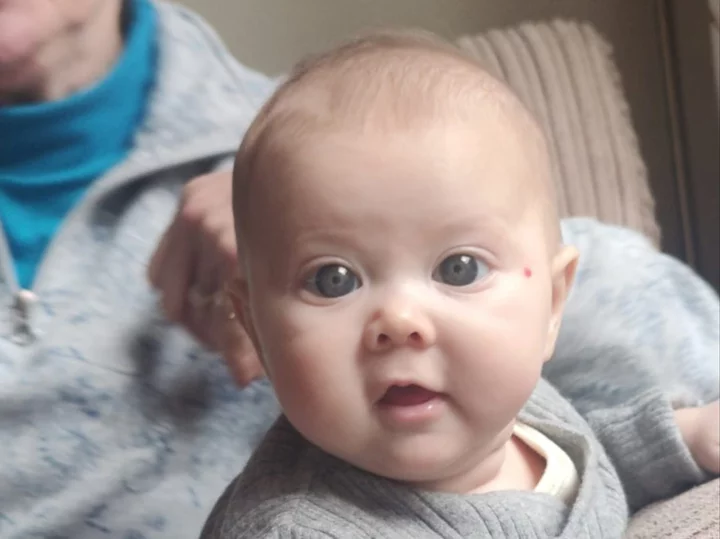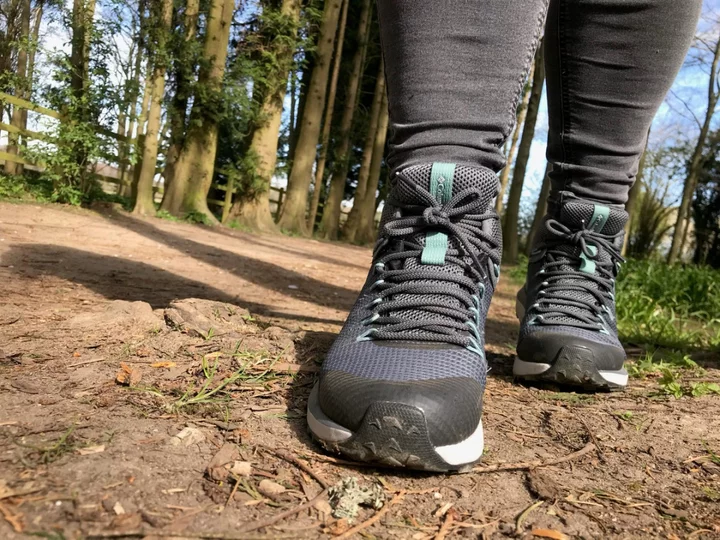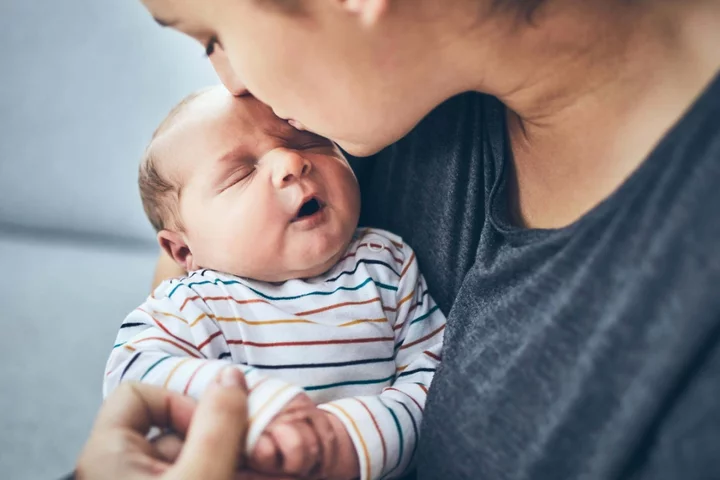
Could bats hold the secret to beating Covid and cancer?
Bats could hold the key to unlocking new ways to combat cancer, a new study suggests. A paper published by Oxford University Press, looks at the rapid evolution of bats for their abilities to both host and survive infections such as Covid-19 as well as cancer. The animals are known to have a strong immune system which helps fight off many viruses and diseases. These mammals are also thought to have played a role in the emergence of Covid-19 and scientists say such characteristics are interesting to investigate due to the implications it might have on human health. According to the research, understanding the mechanisms of the bat’s immune system that allows these animals to fight off viral infections – may pave the way to understanding how to prevent disease outbreaks from animals to people. To conduct the study, researchers sequenced the genomes of two bat species - the Jamaican fruit bat and the Mesoamerican mustached bat. The team used advanced technology from Oxford Nanopore Technologies and bat samples collected by the American Museum of Natural History in Belize. They then compared the bat genomes to those of other mammals. The results revealed that bats possessed genetic adaptations in proteins which are related to DNA repair and cancer suppression. It was found that bats had adaptations in six DNA repair-related proteins and 46 cancer-related proteins. The study also found that bats had more than double the number of altered cancer-related genes compared to other mammals, which provided further evidence that they have the ability to suppress cancer. “By generating these new bat genomes and comparing them to other mammals we continue to find extraordinary new adaptations in antiviral and anticancer genes,” said the paper’s lead author, Armin Scheben. “These investigations are the first step towards translating research on the unique biology of bats into insights relevant to understanding and treating ageing and diseases, such as cancer, in humans.” The results open up new paths for understanding and studying the links between cancer and immunity, which offers hope that these insights from bats might possibly lead to new treatments for human illnesses. According to the United States Department of the Interior, there are over 1,400 species of bats worldwide and are mostly found in extreme deserts and polar regions. In the US and Canada, there are about 45 species of bats. Read More British bats ‘can help identify coronaviruses with potential to infect humans’ Coronavirus origins still a mystery 3 years into pandemic Groundbreaking migraine treatment offers ‘new hope’ for patients World Sepsis Day: What is the condition and its symptoms? Duran Duran’s Andy Taylor says he’s ‘asymptomatic’ after end-of-life diagnosis
2023-09-20 22:28

Placenta abnormalities could be the reason for miscarriages, study suggests
A new study has found that placenta abnormalities could be the reason for miscarriages. In the United States, there are approximately 5 million pregnancies per year with 1 million ending in a miscarriage and over 20,000 ending in stillbirth, according to a paper published in the journal Reproductive Sciences. “To have a pregnancy loss is a tragedy. To be told there is no explanation adds tremendous pain for these loss families,” said senior author of the paper and research scientist at Yale School of Medicine, Dr Harvey Kliman “Our goal was to expand the current classification systems to decrease the number of cases that remained unspecified.” For the study, researchers worked to create a classification system for miscarriages based on a test that examines a sample of the body’s tissues – known as pathologic examination. The team looked at a series of 1,527 single-child pregnancies that ended in miscarriage, and the data was then sent to Yale for evaluation. After excluding cases without adequate material for examination, 1,256 placentas from 922 patients were examined. Of these, 70 per cent were miscarriages and 30 per cent were stillbirths. By adding the explicit categories of “placenta with abnormal development” (dysmorphic placentas) and “small placenta” (a placenta less than the 10th percentile for gestational age) to other incidents such as cord accident, abruption, thrombotic, and infection – researchers were able to determine the results of 91.6 per cent of the pregnancies, including 88.5 per cent of the miscarriages and 98.7 per cent of the stillbirths. The most common results for unexplained miscarriages were dysmorphic placentas (placenta with abnormal development) which was around 86.2 per cent. For stillbirths, there was 33.9 per cent due to a small placenta. “This work suggests that the over 7,000 small placentas per year associated with stillbirths could have been detected in utero — flagging those pregnancies as high risk prior to the loss,” said Dr Kliman. “Likewise, the identification of dysmorphic placentas may be one way to potentially identify genetic abnormalities in the almost 1 million miscarriages that occur in our country every year.” He said having a definite explanation “for a pregnancy loss helps the family understand that their loss was not their fault, allows them to start the healing process, and, when possible, prevent similar losses — especially stillbirths — from occurring in the future.” When asked what the most effective way might be to prevent stillbirths, Dr Kliman responded, “Measure the placenta!” Read More 'Please, keep beating little heart': Man gives raw account of wife's miscarriage and fears for new unborn child Woman who had six miscarriages celebrates pregnancy with rainbow baby photoshoot Miscarriage: The loneliest grief of all Nearly a fifth of parents fear children will ignore health issues while at university Brits feel their mental health declining due to cost of living crisis How often should you wash your pyjamas?
2023-09-19 23:56

Nearly a fifth of parents fear children will ignore health issues while at university
Nearly a fifth of parents fear their teenager will ignore a health issue while at university, as many self-diagnose on Google, research has found. Just 13 per cent of the 2,000 parents polled think their son or daughter would consult a proper doctor as soon as they feel unwell. More than one in 10 (12 per cent) think their offspring would be too lazy to seek medical attention, and 11 per cent fear they do not make their health a priority. The study of parents whose children either attend university, have done in the past or plan to soon, by Bupa Family+, also found that many (53 per cent) said their child thinks they are ‘invincible’ and nothing bad will ever happen to them. And as thousands of students prepare to start university, 56 per cent of parents feel excited for their child while 41 per cent are anxious. Dr Naveen Puri, GP and spokesperson for Bupa Family+, which commissioned the research to support the launch of its Family+ insurance proposition built around savings on health insurance for families, said: “All parents worry about their children, whatever their age. “But it can be especially difficult when they move out for the first time and become more independent – and you are no longer nearby to help them. “As a child and even a young adult, when you are unwell or have a health issue, your parents are often your first port of call, or even the ones spotting something is wrong in the first place. “They are usually the ones pointing you in the right direction, sorting appointments and arranging medication you might need. “Moving out or going to university is both an exciting and daunting time for all the family and we hope our new Family+ cover, which also insures older children, will help provide peace of mind to parents and their children alike.” It also emerged that parents’ top fears for their children as they embark on life away from the family home include their financial situation (44 per cent), their mental health (43 per cent), and whether they will be lonely (43 per cent). Others worry about who they will be spending time with (31 per cent), if they’ll know how to look after themselves (32 per cent) and what they’ll do when they feel unwell (23 per cent). And 64 per cent of those who have a child who has already left home admitted they have even lost sleep worrying about them. It emerged that 55 per cent think they would still be the first port of call for help or advice if their child felt unwell despite no longer living under the same roof. Ahead of them moving out, 63 per cent of parents will teach them how to manage their finances, while 59 per cent give tips on how to cook healthy meals. Others show their child how to use a washing machine (56 per cent), how to drink responsibly (40 per cent) and how to deal with mental health concerns (43 per cent). The study, carried out via OnePoll, also revealed girls are considered more likely to take care of their physical (43 per cent) and mental (41 per cent) health than boys (13 per cent and 11 per cent). Dr Naveen Puri, GP and spokesperson for Bupa Family+ said: “Our health is so important, and it can be worrying for parents that their child may be unwell when they aren’t there to help. “Making sure they have the knowledge about what to do in different health situations is a great way of not only ensuring they can look after themselves but also allows you to relax a little knowing they have the tools they need.” Here are the top reasons why parents worry their child would ignore health issues: 1. Googling and self-diagnosing 2. Being too lazy 3. Health is not a priority 4. Embarrassed to talk about their health 5. Worried a GP would judge them Following the findings, Bupa has launched an online survival guide to help students in this next chapter in their lives. Read More ‘It can be hard when your kids leave the nest,’ mother says as study finds parents want their children back How to cope with anxiety during university Brits feel their mental health declining due to cost of living crisis How often should you wash your pyjamas? ‘My baby’s blue eyes drew praise – but their colour was a warning sign’
2023-09-19 23:24

Brits struggle with mental health due to cost of living crisis
People in Edinburgh, Leicester and Glasgow are struggling the most with their mental health - due to the cost of living crisis. A poll of 2,000 adults found 27 per cent have really taken a hit when it comes to their wellbeing, because of a lack of finances. Newcastle, London and Leeds are other key cities where people are most affected. Cutting down on socialising, gym memberships and nutritious food to save money are reasons why so many feel disheartened and worried about their mental wellbeing. And 40 per cent are dreading the winter as they are unsure if they will be able to afford energy bills to heat their home. The survey was commissioned by British Gas, which is working with Professor Green to raise awareness of the struggles so many are facing and highlight the free support available in the new phase of the British Gas Post Office Pop-Ups. The musician and mental health advocate said: “As a parent your first instinct is to protect and provide, and when you’re doing everything you can, and that’s still not enough, it has a profound impact on your mental health. “Shame, stigma and fear can keep people from speaking up for help, but it’s the best thing you can do – for yourself, your family and your community. “Stress and anxiety breed in uncertainty so I really encourage you to visit a British Gas Post Office Pop-Up or contact the British Gas Energy Trust to help you gain confidence in, and control of, your future.“ The research found 14 per cent of adults are cutting back on how often they shower to lower their bills, and 21 per cent aren’t buying birthday gifts for loved ones. One in 20 (five per cent) say their kids are missing out on new toys. Just over half (55 per cent) believe their mental health would definitely improve if they were more financially stable. People in Manchester were found to be most likely to skip using heat or electricity to keep their homes warm. But those in Edinburgh were most likely to report that they have had issues with money that have led to incurring additional debt, like credit cards. Only 27 per cent of all adults polled via OnePoll are confident they are accessing all the benefits they may be entitled to when it comes to support with their energy bills. One in 10 also believe the rising cost of energy has caused them a great deal of additional stress. And 25 per cent baldly state they are expecting to struggle to pay their energy bills through the rest of the year. Nearly the same amount (24 per cent) said the current cost of living crisis has been just as bad for their mental health as the Covid-19 pandemic. British Gas Energy Trust CEO Jessica Taplin said: “Debt and money stresses are debilitating, which is why we are delighted to be offering money and energy advisors funded by us in Post Offices across the country. “Working with an artist like Professor Green can really help raise awareness, and let people know it’s good to talk about the things that are worrying them.” Read More Voguewashing London Fashion Week won’t pay the wages of Britain’s young fashion designers What is happening to local government finances and why are councils struggling? ‘School staff seeing more students who do not have enough dinner money’ Nearly a fifth of parents fear children will ignore health issues while at university How often should you wash your pyjamas? ‘My baby’s blue eyes drew praise – but their colour was a warning sign’
2023-09-19 22:48

How often should you wash your pyjamas?
We all have our favourite pair of PJs we come back to – time after time. Some of us may even have special pyjamas for lounging around in and feeling comfy when snuggled up with Netflix on the sofa. But because they’re only worn inside the house and for sleeping (well, most of the time), the rules can seem different when it comes to PJ maintenance. So, how often should we be washing them and switching to a clean pair? Do you need to wash your pyjamas daily? “You might be surprised to know the answer is no!” says cleaning and laundry expert Laura Mountford, author of Live, Laugh, Laundry. “Like all of our clothing, many of us may be guilty of washing our pyjamas too frequently, or perhaps not enough. But in reality, pyjamas should be washed after every two or three wears. Washing them after every wear, unless they are actually stained, smelly or sweaty, is unnecessary – a waste of money, water and energy,” Mountford adds. She suggests pyjamas can be left to air between wears, and this should be sufficient for them to freshen up ready for the next night – so putting them under your pillow probably isn’t the best idea. Should you wash them more in the summer? “I wash my pyjamas more in the summer when the nights are hot,” says Mountford, “as sweat can cause bacteria growth, which will make them smell. And nobody wants to snuggle into bed in sweaty pyjamas, do they?” What’s the most hygienic way to wash your pyjamas? Sophie Lane, product training manager at Miele GB, says: “Wash pyjamas at the highest temperature the fabric can cope with – check the garment care label. This will deliver the most hygienic clean. Detergent is also important to achieving good results.” Are different materials more or less hygienic? Natural fabrics like cotton are the most hygienic, suggests Mountford, as they are breathable, so bacteria and sweat builds up less quickly compared to manmade fabrics like polyester. Lane agrees, adding: “Cotton is also extremely durable and can withstand high temperature washes. Bamboo is another good fabric option for pyjamas. It’s very breathable whilst being effective at thermal regulating, to keep you warm in the winter and cool in the summer. It’s also anti-bacterial, hypo-allergenic and odour-resistant.” What happens if you don’t wash pyjamas regularly? Mountford says: “Most of us wear our pyjamas for eight hours each night, so not washing them frequently enough can cause bacteria to grow, making them smelly and unhygienic… not very cosy at all. This may reduce the quality of your sleep,” she adds – noting it could result in “skin irritation” too. Does it make a difference if you shower before bed or in the morning? “Showering before bed keeps your pyjamas and bedding fresher for longer, as you are jumping into bed with a clean body, having already removed the dirt, bacteria and allergens from the day,” says Mountford. “Not showering before bed will cause these particles to be transferred onto your nightwear and bedding, which will cause them to get dirty and smelly more quickly.” Read More Charity boss speaks out over ‘traumatic’ encounter with royal aide Ukraine war’s heaviest fight rages in east - follow live Beginner’s guide to buying second-hand furniture These are the best shorter daffodils to plant now for spring – according to RHS trials Do I need to treat my garden furniture before storing it for winter?
2023-09-19 15:52

‘My baby’s big blue eyes drew endless compliments – but they were the sign of a life-changing condition’
A baby’s “beautiful big blue eyes”, which were complimented by everyone, turned out to be a symptom of a condition causing blindness. Louise Bice, 34, was stunned when her daughter, Aretria, was born with big blue eyes – a trait nobody else in the family had. Her “beautiful” eyes would see the tot complimented “six or seven times every day” by strangers – which Louise loved. But at six months old, in May 2023, one of Aretria’s baby blue eyes turned “milky” and any light caused the tot to scream in pain. Louise and her partner, Connor Bice, 29, a chartered accountant, thought their youngest daughter might have hit her eye with a toy. But the family were told Aretria - now 10 months old - had a severe case of bilateral congenital glaucoma, a genetic abnormality which saw extreme and growing pressure on the optic nerve. Her much-loved big eyes actually required urgent surgery. Tiny Aretria had a four-hour operation at Birmingham Children’s Hospital in June to relieve the pressure - but follow-up tests showed it had failed. She had a second surgery in August and her parents are awaiting the results - although the tot has lost almost 100 per cent of her vision in one eye already. Mum Louise wants to warn other parents to look for the symptoms - and to not assume big eyes are “beautiful” when they could be a sign of something more serious. Louise, a stay-at-home mum, from Mansfield, Nottinghamshire, said: “I never expected Ari’s big, beautiful eyes to be a bad thing. “Suddenly one day her eye clouded over – one minute it was fine and 15 minutes later it was completely changed. “Specialists had to do horrific tests on her and I learned she had already lost some vision in both eyes. “After two surgeries we still don’t know what will happen - she already has just five per cent vision left in her right eye. “She’s in so much pain and I don’t know if she can cope with another surgery. “I just think if we had managed to get this diagnosed before the pressure got out of control, she might not now be blind in one eye. “If someone had said it was weird, she had big eyes rather than cute we might have got it checked - but none of us knew it was even a red flag.” After Aretria was born on 20 October 2022, her big eyes became a source of many compliments from friends and family. Her parents even lovingly likened their little one to a cartoon bug, thinking nothing of it. Even doctors and health visitors thought they were sweet - and nobody mentioned any risks. But on May 20, Louise popped to the shop and when she returned 15 minutes later one of her daughter’s eyes was clouded. Louise said: “Connor sent me a picture that morning of the two of them together while I was out and her eyes were fine. “When I got back her right eye had clouded over. “I hadn’t even got through the door when I said ‘we need to take her to A&E right now’.” They went to their local hospital, King’s Mill, Mansfield, then were sent to Chesterfield Royal Hospital, Derbyshire, where doctors identified the high pressure but couldn’t work out why it was happening. They were then booked in to see specialists at Queen’s Medical Centre, Nottingham, two days later on May 22. Aretria’s condition was finally diagnosed - as bilateral congenital glaucoma - and even the specialists said they’d only seen a handful of cases. Medics explained the little girl needed surgery but warned even then, she’d be left with little vision in her worst eye because the damage had already been done. Louise said: “Doctors said she had been exposed to high eye pressure from birth because her fluid drainage system didn’t form properly in her eye when she was still in the womb.” A surgery was scheduled at Birmingham Children’s Hospital, West Midlands, for June 13 which saw the tot go under the knife. The four-hour procedure was followed by a month of eye drops six times a day as well as having protective eye shields taped onto her face for a week. Louise said: “We didn’t get any sleep for about a week after and hoped that would be the last of it. “But two weeks later when we went back for her post-op, the pressure readings were even higher than before. “The operation had failed – and she would need more surgery.” A second operation was done on 18 August – and it was again followed by a gruelling recovery for the tot, who couldn’t understand why any of it was happening. They’re still waiting for official results, but signs so far suggest the surgery may have been unsuccessful for a second time. Louise said if that’s the case, medics will move on to a different kind of surgery to release the pressure involving drainage tubes or valves. She fears the tot “might not cope with another surgery” – but they may not have a choice. While Aretria’s vision is virtually gone in her right eye, her left eye is compensating – although Louise and Connor fear the vision will worsen in her good eye too. Louise wants to warn parents to look out for the symptoms – even if they might not seem sinister. She said: “Before, she used to get compliments about her eyes six or seven times a day. “Now I just feel really awkward when people say it. “Aesthetically it might be, but having these big, beautiful eyes isn’t always a good thing. “If we knew that before, she might not be blind in her right eye now.” Read More GoFundMe for actor blinded in attack over Covid mask tops $15,000 He couldn’t see his wedding. But this war-blinded Ukrainian soldier cried with joy at new love A camp teaches Ukrainian soldiers who were blinded in combat to navigate the world again How to cook to keep your gut healthy ‘Millions of women and girls suffer severe pain’ during periods – research finds Miriam Margolyes jokes that her ‘longing for fudge’ caused her health issues
2023-09-19 00:56

Tried & Tested: 5 summer walking boots
Whether you’re after waterproof walking, springy strolls or harder hikes and punishing treks, there are plenty of boots out there which will be a perfect fit this summer. Take a look at five we tried out, to help you put your best foot forward on a summer staycation. Berghaus Women’s Expeditor Trek 2.0 Boots (£99, tiso.com) Key features: No wearing in needed, thanks to super cushioning from the EVA midsoles and OrthoLite footbed. Their split suede upper, robust, grippy soles and all-round performance makes them good value for money. They were also the easiest boots to get on and off, with a wide entry point. Verdict: These snug-fitting – but comfy – walking boots pack a punch for the price and I did a five-miler straight from the box and didn’t suffer any ill effects around the toes or the ankles. They are reasonably lightweight and fairly generous width-wise, although I could feel a slight pinch point mid-foot by the end of the first walk, which evened out the more I used them. The grip is sufficient for tricky hills and they are also waterproof, although I suspect you won’t do the suede upper any good if you’re traipsing through boggy puddles. On the whole, a great all-rounder for the price. Columbia Women’s Trailstorm Mid Waterproof Walking Shoe (£90, columbiasportswear.co.uk) Key features: Their weight – just 290g. Their versatility and good looks mean they wouldn’t look out of place under jeans, if you’re doing a short amble with a stop-off at the pub, or some easy sightseeing en route. Verdict: These super-lightweight boots – which are actually billed as a walking shoe but have some ankle cushioning – are a cross between a sturdy trainer and a light walking boot. They have the comfortable springiness of a trainer – which is great for walking on dry ground – while the grip will hold you steady on more rocky terrain. They are waterproof, withstanding a bit of summer rain, but I wouldn’t be taking them into boggy winter conditions any time soon. They’re ideal for summer, when you don’t want heavy boots for meandering along easy country paths and green fields in the sunshine. Get a size up from your regular shoe fitting and you’ll do miles in total comfort. Helly Hansen W Switchback Trail Helly Tech (£120, hellyhansen.com) Key features: Their toe and heel caps keep your feet secure and protected, they’re fully waterproof and feel sturdy, despite being relatively light. Verdict: These are impressively sturdy boots considering how light they feel, definitely not an enhanced trainer but with an understated, stylish look, which would appeal to both younger and older walkers. During a 10-miler across mixed terrain, they had a sure grip providing stability on rocky, unstable downhill slopes, while the cushioning on super hard surfaces made you feel like you were walking on cotton wool. Get yourself a size up if you want to wear thick socks with them in the winter, but the spongy, comfortable materials used around the ankle and the tongue should assure you of a blister-free trek. Merrell Moab Speed Mid GORE-TEX (£135, merrell.com) Key features: The mid-sole has extra cushioning, which protects the balls of your foot, along with a ‘rockplate’ which helps reduce the impact of unforgiving sharp rocks or stones underfoot. Verdict: With a Gore-Tex lining you can count on, I yomped through muddy fields and shallow puddles and stayed dry – it’s worth paying an extra few quid for the knowledge you won’t be squelching in your boots. In our unpredictable British summers, though, you want plenty of breathability which these boots have in spades. After trying them out on a warm spring day in thin socks, my feet emerged as dry as a bone. Eco-warriors may be impressed with the 100% recycled laces, which didn’t feel flimsy, the recycled mesh lining and 30% recycled rubber in the outsole. AKU Alterra Mid GTX (£229.90, aku.it/en) Key features: The outer sole and impressive grip helps prevent you stumbling on rocky, uneven ground, while there’s excellent protection around the ankle, yet it still feels spongy and comfortable. Verdict: The Italian specialist brand Aku says these sturdy boots are designed for medium terrain and longer rambles over mixed ground, but these were by far the toughest boots, with such impressive grippy soles that I think they’re just as suitable for winter walks. They may be a little extravagant – and a bit heavier looking – for easier summer rambles, but if you’re a hardcore hiker with aims of climbing challenging peaks this summer, these are just the job. And right on cue, Aku has brought out a new lighter weight version of the same boot, so look out for the Alterra Lite Mid GTX. Read More Charity boss speaks out over ‘traumatic’ encounter with royal aide Ukraine war’s heaviest fight rages in east - follow live Do I need to treat my garden furniture before storing it for winter? Prince William heads to New York for UN General Assembly climate week event London Fashion Week: Jourdan Dunn walks in emotional Richard Quinn show
2023-09-18 23:45

Brits get itchy feet in their home after five years, study finds
The average Brit starts to get itchy feet in their home after five years, a study has found. Researchers revealed after living happily in their homes for years, the five-year-itch hits, resulting in property owners browsing websites and estate agent windows for their next buy. Looking online at property websites (59 per cent) and taking an interest in ‘for sale’ homes in your neighbourhood (32 per cent) are the major tell-tale signs people are considering a move. And 31 per cent admit thinking about what they can do to get their home ready to sell (31 per cent) is another indication they’re ready to make the switch. Anthony Ward Thomas, of Anthony Ward Thomas Removals, which commissioned the study of 2,000 adults, said: “Moving can be a challenging task, but it doesn’t need to be. “It’s not a surprise for 54 per cent of people, cost is the most important factor when making a move.” The research, carried out by OnePoll, found Londoners get itchy feet the quickest of any region – as they want to move less than four years in. Those in the capital aren’t as willing to stay put in their property either, as they said they could stay at their current home for another seven years at a push – compared to those in the East Midlands who would live at their current abode for more than 13 years. Other top signs people are looking to move home include getting fed up with the neighbours (24 per cent), not having enough storage space (23 per cent) and no longer enjoying spending time in your home (22 per cent). However, one of the major factors putting people off moving was the thought of shifting their stuff (55 per cent). Despite this, only 43 per cent of people who moved home previously said they used a removal company to help them. Yet 59 per cent said if they were to move now, they’d get outside help from a specialist – highlighting just how important they are. In fact, a staggering show of support, 92 per cent of those who had used a removal company said they would use one again. Among the major benefits included not having to do the heavy lifting (62 per cent), being less stressful (50 per cent) and having one less thing to worry about (45 per cent). Others included saving time (42 per cent) and not getting injured lifting heavy things (40 per cent). Anthony Ward Thomas added: “As our results show, one of the major factors which puts people off moving is having to move their belongings. “Using a professional company to help you pack up, move out and move in buys you peace of mind. “It should be any delivery firm’s number one priority to ensure every single item is looked after as if it were their own and to care about every move.” FIVE TELLTALE SIGNS YOU’VE GOT ITCHY FEET: Looking online at property websites Taking an interest in ‘for sale’ signs in your neighbourhood Getting fed up with the neighbours Not having enough storage space No longer enjoying spending time in your home TOP 5 TIPS FOR MOVING HOME, FROM ANTHONY WARD THOMAS: Make a move plan – include all tasks on it and assign them to people and/or companies helping you Clear the clutter – give yourself 5 categories: keep, sell, bin, store or giveaway Hire professionals – don’t cut costs and do a DIY move, it pays to have peace of mind Pack from the top down – start at the top and work downwards, labelling your boxes with what’s in them, where they’ve come from and where they’re going to Box of essentials – from a kettle, mugs and coffee to bedding for the first night and the kid’s iPads, pack up useful items in one box. Read More What is Cheese-pulling? New world record set for highest pull Zombie ant parasite is ‘even more cunning’ than previously thought, scientists say NASA astronaut Frank Rubio breaks US record for longest spaceflight Mother explains decision to breastfeed her four-year-old son ‘My baby’s blue eyes drew praise - but their colour was a warning sign’ What the world’s happiest children tell us about where Britain is going wrong
2023-09-18 23:23

Border authorities separated some migrant families amid overcrowding in facilities, report says
US Border Patrol separated some migrant children from their parents while the families were in custody amid overcrowding in facilities, according to a Friday court filing.
2023-09-17 04:48

Sia reveals she suffered ‘severe’ three-year depression after divorce from Erik Anders Lang
Sia has opened up about the painful experience she underwent after her divorce from ex-husband Erik Anders Lang. The “Chandelier” singer, 47, spoke candidly about her mental health in an interview with Zane Lowe for Apple Music 1 on 13 September. “Well, actually, the truth is that I had just been every now and again writing a song here or there for the last six, seven years,” Sia said while discussing her forthcoming album, Reasonable Woman. "I got divorced and that really threw me for a loop,” she explained. “That was such a dark time that I was in bed for three years, really, really severely depressed. And so I couldn’t really do anything for that period of time.” However, the “Unstoppable” singer was able to record “just little bits and pieces here and there” of her new music, and eventually felt inspired to create an album. “Finally, it just turned out we had enough songs to make an album, enough good ones,” Sia continued. “I just rely on my management to tell me when we’ve got enough good ones, because I don’t really... I can tell when I think one is particularly good, I think I can tell, but they tell me when we’ve got 11 or 12 or 13 enough good ones, real good ones.” Sia, whose full name Sia Kate Isobelle Furler, was previously married to filmmaker Erik Anders Lang. The former couple were married at the Grammy-winner’s Palm Springs home in August 2014. However, they filed for divorce two years later, citing “irreconcilable differences”. These days, the “Cheap Thrills” singer has moved on with husband Dan Bernad. The couple were married last May during an intimate wedding ceremony in Italy with “just four” guests present. Sia has managed to keep many details about her relationship with Bernad private, sharing only one picture with him on Instagram last year. “Pride forever! #lgbtqia+ #LAFC #22 also just finished my next album! A great day all round!” she captioned the post, which featured Bernad. According to People, the couple tied the knot during a candlelit ceremony at Domenico Dolce and Stefano Gabbana’s Villa Olivetta in Portofino, Italy – the same venue where Kourtney Kardashian married Travis Barker in May 2022. The bride wore a lace mermaid wedding gown, complete with a matching, nude sheer veil, while Bernad chose a light-coloured tuxedo for the nuptials. They reportedly exchanged vows under an iron gazebo, adorned with pink, purple, yellow, and white flowers. In 2020, Sia announced she had become a grandmother at the age of 44 - one year after she adopted two adult sons. Speaking to Apple Music’s Zane Lowe at the time, she revealed that one of her adopted sons had just become a father. “My youngest son just had two babies, I’m just immediately horrified,” she quipped. “No, I’m cool. They call me Nana. I’m trying to get them to call me Lovey, like Kris [Jenner]. I’m like: ‘Call me Lovey’... I’m a f***ing grandma!” Read More Sia marries boyfriend Dan Bernad at wedding with ‘just four guests’ ‘I love them’: Sia reveals she adopted two 18-year-old sons Emily Ratajkowski jokes she’ll date ‘anyone who wants to take her to dinner’ David Foster and Katharine McPhee express grief after death of their child’s nanny Mother defended after calling father ‘creepy’ over name choice for newborn daughter Action needed to protect women from birth trauma – MP
2023-09-16 03:53

Action needed to protect women from birth trauma – MP
More must be done to protect women from birth trauma, a Tory MP has said after a new poll revealed that traumatic births have prevented a significant proportion of women from having more children. Theo Clarke said that it was “vitally important” that women receive the care and support they need after a traumatic birth. It comes after a poll of members of the Mumsnet community found that more than half (53%) who had suffered birth trauma said their experience put them off having more babies. The MP for Stafford has previously spoken out about her own birth story, where she described how she thought she was “going to die” after suffering a third degree tear and needing emergency surgery. She has since set up an All Party Parliamentary Group (APPG) on Birth Trauma to try to highlight the plight of thousands of women who suffer similar situations each year. A poll of 1,000 members of the Mumsnet website, shared with the PA news agency, found that 79% of those surveyed had experienced birth trauma. While the poll does not represent all mothers across the UK, it provides a snapshot of the experiences of those who use the popular parenting site. The survey also found that 72% of those who had experienced birth trauma said their issue had not been resolved a year after giving birth. Among those who had experienced physical, emotional or psychological birth trauma, 44% said healthcare professionals used language which implied they were “a failure or to blame” for the experience. Three quarters (76%) of all of those polled said they felt that health professionals had become “desensitised” to birth trauma. Almost two thirds (63%) said they did not believe healthcare workers did everything they could to prevent birth trauma. And 64% said they felt a “lack of compassion” from healthcare professionals during labour. Commenting on the poll, Ms Clarke said: “These survey results are deeply upsetting. They speak to my own experience of birth trauma and quite clearly to many, many other women’s horrendous experiences too. “That more than half of women across the UK who responded say they are less likely to want another child because of their birth experiences and they were made to feel they were to blame is simply terrible. “The survey is clear that more compassion, education and better after-care for mothers who suffer birth trauma are desperately needed if we are to see an improvement in mums’ physical wellbeing and mental health. “The APPG is now up and running in Parliament and will continue to listen to mothers and experts to drive fundamental change in how we treat mums. Our ambition is for birth trauma to be included in the Government’s women’s health strategy. “It is vitally important women receive the help and support they deserve.” Mumsnet chief executive Justine Roberts said: “We hear daily on Mumsnet from women who have had deeply upsetting experiences of maternity care, and this latest research underlines that the majority of mothers experience birth trauma – whether physical or psychological. “This trauma has long-lasting effects and it’s clear that women are being failed at every stage of the maternity care process – with too little information provided beforehand, a lack of compassion from staff during birth, and substandard postnatal care for mothers’ physical and mental health.” Kim Thomas, chief executive of the Birth Trauma Association, added: “It is time for a complete overhaul in the way women experience maternity. “This should include: honest, evidence-based antenatal education; compassionate and professional care during labour; and postnatal care that is designed to identify and treat every birth injury or mental health problem. “A maternity system that puts women at the heart of care is not some kind of unfeasibly high goal – it is the bare minimum that women have the right to expect.” A Department of Health and Social Care spokesperson said: “We are committed to making the NHS the safest place in the world to give birth, and improving support for women before, during and after pregnancy is a priority in the Women’s Health Strategy. “We are investing an additional £165 million per year to grow and support the maternity workforce and improve neonatal care. NHS England recently published a three-year plan to make maternity and neonatal care safer, more personalised, and more equitable for women, babies, and families. “To support women following trauma related to their maternity experience, we are rolling out 33 new maternal mental health services, which will be available across England by March 2024.” Read More Charity boss speaks out over ‘traumatic’ encounter with royal aide Ukraine war’s heaviest fight rages in east - follow live Imagination and hard work in children trumps obedience – research finds 7 ways you could be damaging your eye health without even realising Celebrities mingle with royals at glam Vogue World party in London
2023-09-15 16:27

‘Millions of women and girls suffer severe pain’ during periods – research finds
Almost half of people who menstruate experience period pain that is ‘severe’ – and 51% feel their symptoms aren’t taken seriously by healthcare professionals, new research has found. The survey, commissioned by health charity Wellbeing of Women, asked 3,000 women and girls in the UK about their experience. A massive 86% of those surveyed said they have had mental health problems in relation to their period. Many said they had ‘debilitating pain’, bleeding for six weeks and some waited decades for a diagnosis of a health condition, in the survey of 16 to 40-year-olds across all regions, backgrounds and ethnicities. Women and girls have been “dismissed for far too long”, said Professor Dame Lesley Regan, chair of Wellbeing of Women. “It’s simply unacceptable that anyone is expected to suffer with period symptoms that disrupt their lives.” Painful, irregular and heavy periods can be symptomatic of serious gynaecological conditions. Signs of the chronic condition endometriosis – when the endometrial lining grows outside of the uterus – include debilitating period pain. Similarly, adenomyosis – a condition where the uterus lining starts growing into the muscle of the womb wall – is normally identifiable by painful periods and heavy bleeding. Painful periods may also be a sign of fibroids, non-cancerous growths that develop in or around the womb. Despite around two in three women developing at least one fibroid at some point in their life, according to the NHS, only 38% of those surveyed knew about the condition. Awareness for adenomyosis was even lower, at only 10%. The research found only 14% have tried medication to reduce heavy bleeding, despite treatments, like tranexamic acid which reduces blood loss significantly, being available. Caroline Nokes, Conservative MP and chair of the Women and Equalities Committee which is conducting an inquiry into reproductive and gynaecological health, said: “There is a terrible phrase, ‘Well, it’s just a period, why are you making a fuss about that? Can’t you just get on with it?’ “Yet many women and girls are experiencing horrendous period symptoms and gynaecological conditions. “These are impacting the health of women and girls, and preventing them from taking part in work, school, sport and everyday life. “Endometriosis alone affects 1.5 million women in the UK and costs the economy £8.2 billion – now is the time for change.” Wellbeing of Women have launched a new campaign called ‘Just A Period’ – aiming to address the normalisation of worrying period symptoms. NHS GP Dr Aziza Sesay said: “In my clinic, I see teenagers who are anaemic, who miss several days of school, and they don’t realise that this isn’t normal. They’ll literally use the words, ‘It’s just a period’. “It’s vital that we raise awareness and education on periods. We need to stop the narrative that heavy and painful periods are something we have to live with. “I want women and girls to have the knowledge to advocate for themselves, to push for more investigations, and to push for a diagnosis and treatment so that they don’t have to live with debilitating symptoms.” Clare Nasir, Channel 5 weather broadcaster and host of BBC Under the Weather broadcast, was diagnosed with fibroids and had an myomectomy – an operation to remove them. “With fibroids, there’s the physical pain but also the mental pain, I was struggling to conceive but looked about five months pregnant. People would write into the show asking why I hadn’t declared my pregnancy. It took a toll on my mental health. “When I eventually had my myomectomy, it was life changing. I’m passionate about raising awareness so that other women don’t feel alone and or suffer unnecessarily.” Read More Charity boss speaks out over ‘traumatic’ encounter with royal aide Ukraine war’s heaviest fight rages in east - follow live Cats given vegan diets ‘have better health outcomes’, study claims Groundbreaking migraine treatment offers ‘new hope’ for patients Taylor Swift and Shakira lead the charge in slit dresses at the 2023 MTV Video Music Awards
2023-09-14 13:16
